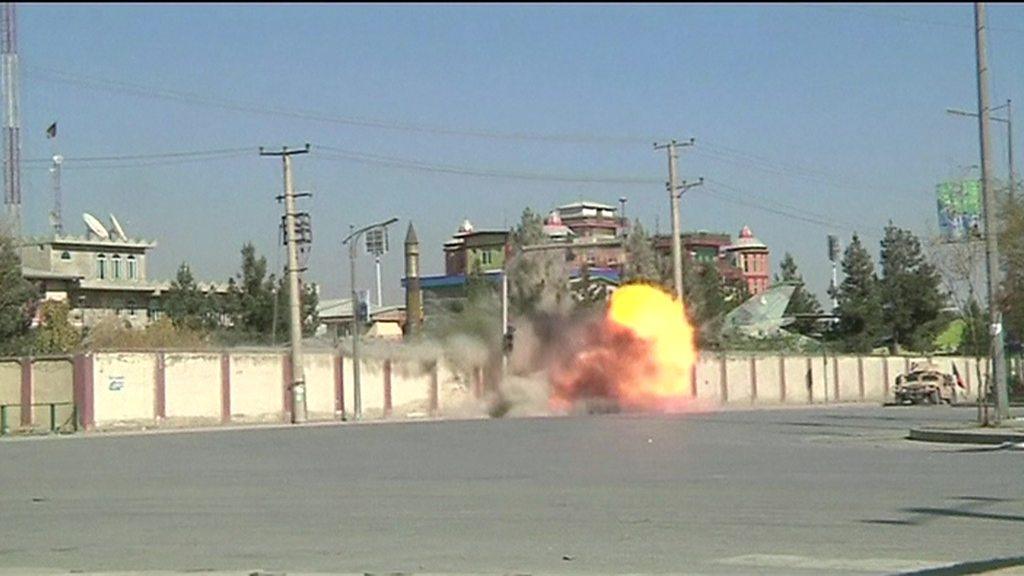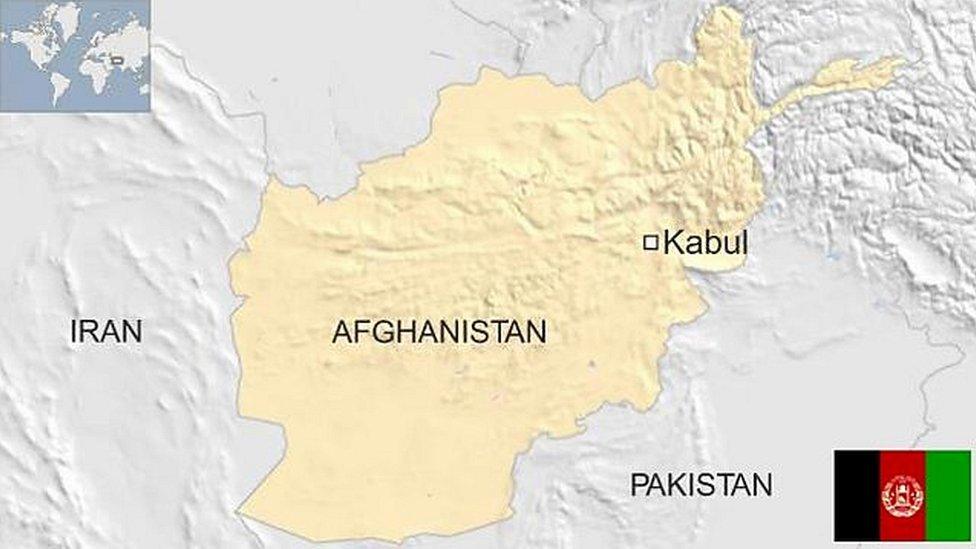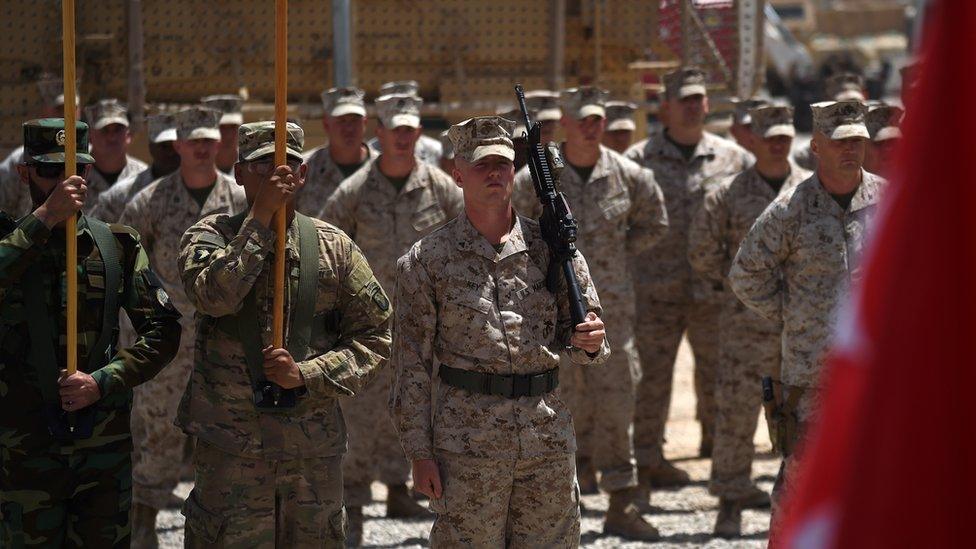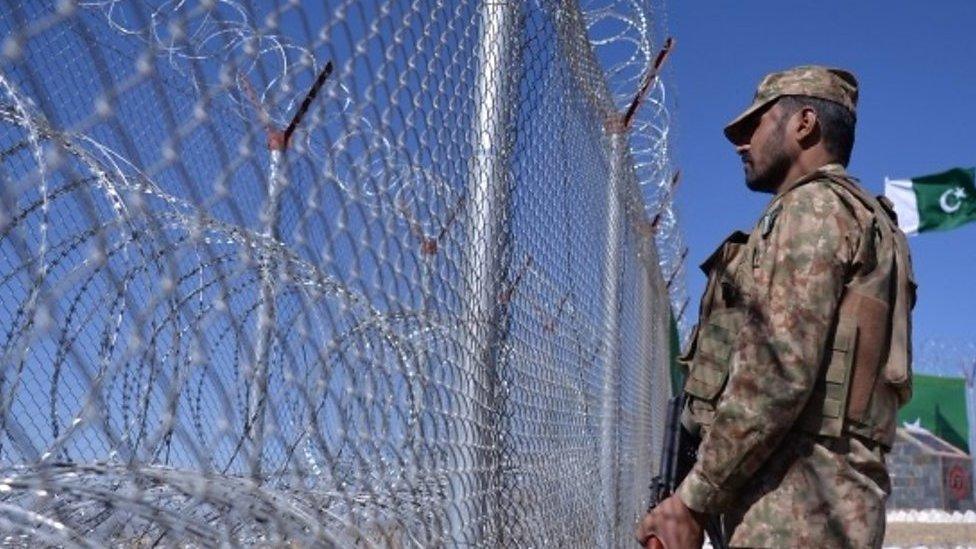Afghan television channel Shamshad TV back on air after attack
- Published
Afghan security used explosives to reach the TV station attackers
An Afghan television station has returned to air just hours after an attack by militants left at least one staff member dead.
Gunmen disguised as police officers stormed the Shamshad TV building in the Afghan capital Kabul.
So-called Islamic State later said it was behind the attack.
But soon after Afghan security forces brought the raid under control, a Shamshad anchor was back on the channel, reporting on the assault.
At least three attackers were involved, armed with guns and grenades. The station said one blew himself up at the entrance gate while another went up to the roof to fire at security forces.
Staff were trapped inside, with some jumping out of windows and others escaping through a neighbouring building. Normal programmes were replaced with a still image.
Special forces had to blast their way through a wall protecting the station to enter.
'An attack on freedom'
A security guard has been confirmed killed and 20 people wounded.
The mother of a female journalist at the station told the BBC she had received no news of her daughter, hours after the attack.
One of the news presenters, with his hand bandaged from cutting himself on broken glass, gave details of the assault to viewers.
"We have all come back [to work], all our journalists and colleagues are back on duty," he said.
Allow X content?
This article contains content provided by X. We ask for your permission before anything is loaded, as they may be using cookies and other technologies. You may want to read X’s cookie policy, external and privacy policy, external before accepting. To view this content choose ‘accept and continue’.
"This is an attack on freedom of media but they cannot silence us," the station's news director Abid Ehsas told another outlet, Tolo News.
Shamshad TV broadcasts a wide variety of programmes including news and current affairs in the Pashto language. It is one of the BBC's partner stations.
Kabul has been targeted repeatedly in recent months by the Taliban and IS.

The threat to journalists
Afghanistan is one of the world's most dangerous countries for journalists and media workers.
The first six months of 2017 saw a surge in violence against journalists, with local monitor the Afghan Journalists Safety Committee, external recording 73 cases, an increase of 35% in comparison to the same period in 2016.
In May two media workers, including a BBC driver, were killed in a massive bomb attack in Kabul. The offices of Afghan broadcaster 1TV were also damaged
Also in May, IS targeted the Afghan state television building in the city of Jalalabad, killing six people
Last year seven members of staff from the private Tolo television station were killed in a Taliban suicide bombing in Kabul.
Allow X content?
This article contains content provided by X. We ask for your permission before anything is loaded, as they may be using cookies and other technologies. You may want to read X’s cookie policy, external and privacy policy, external before accepting. To view this content choose ‘accept and continue’.
- Published7 November 2017

- Published4 November 2017

- Published10 March

- Published22 August 2017

- Published20 October 2017
